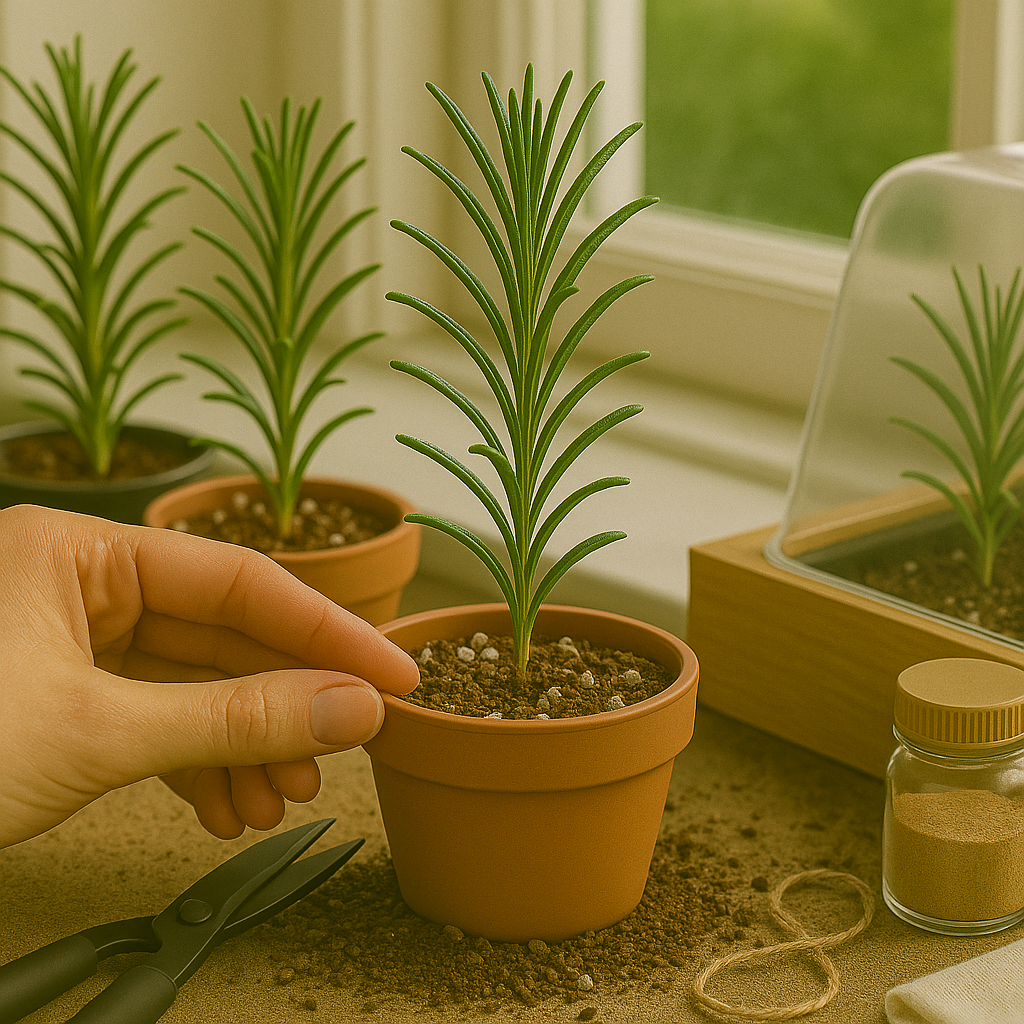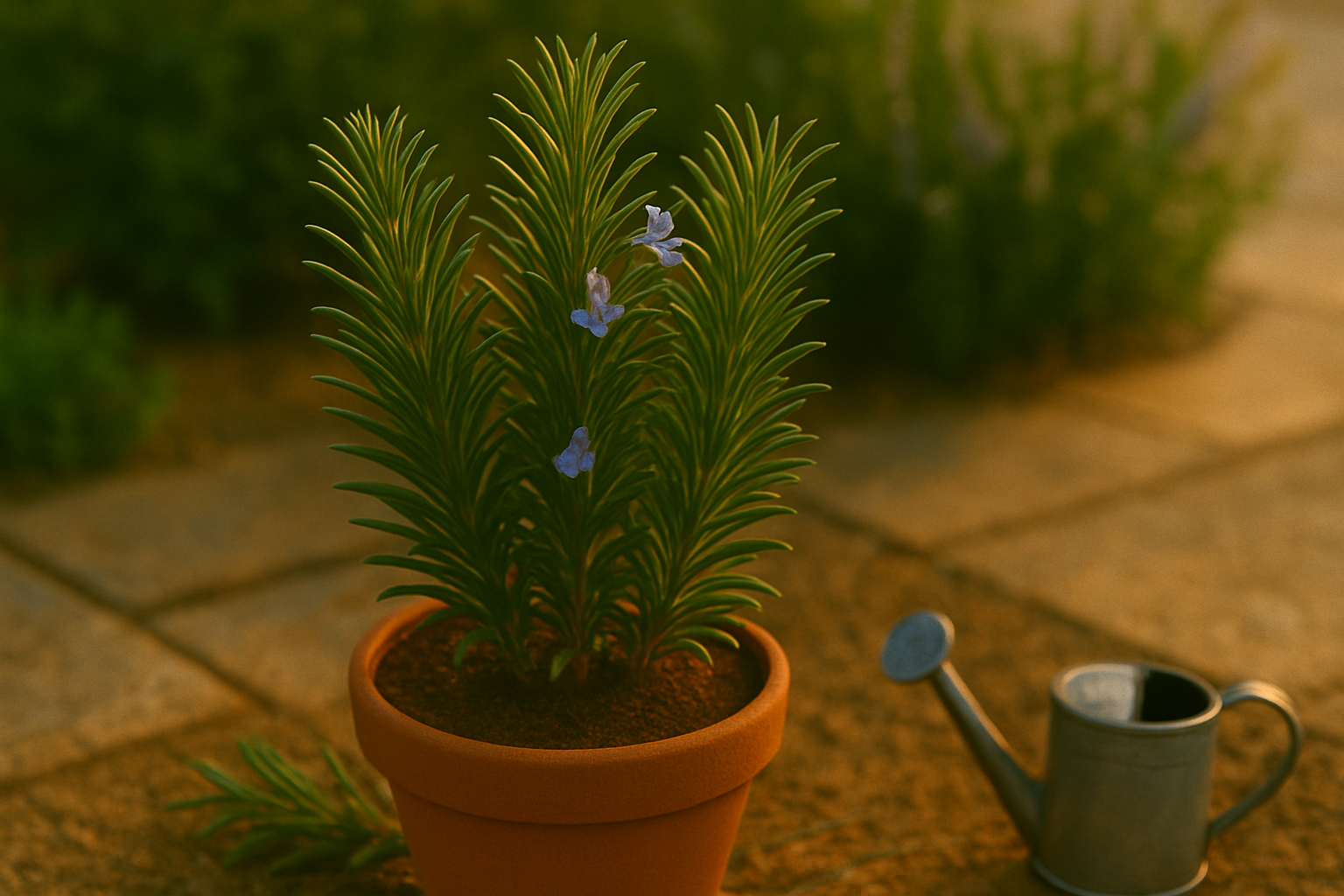Introduction to Rosemary
When it comes to versatile herbs that thrive outdoors, rosemary outdoor care is an essential topic for any garden enthusiast. This fragrant, evergreen shrub isn’t just a staple in Mediterranean kitchens—rosemary’s needle-like leaves add delicious flavor to roasted meats, breads, and vegetables. Its elegant, upright form and blue blooms bring year-round charm to garden beds and patio pots alike. Whether you dream of snipping fresh sprigs for your holiday roast or enjoy the visual appeal and pollinator-friendly flowers, rosemary fits perfectly into a variety of outdoor spaces.
Part of rosemary’s wide appeal is its hardiness and relatively low maintenance, making it a smart choice for both first-time gardeners testing their green thumb and seasoned pros looking to diversify their herb collection. It tolerates heat, resists most pests, thrives in well-drained soil, and can flourish with minimal fuss in containers or directly in the ground. Plus, with proper care, rosemary can last for years, offering tangible rewards each season.
In this post, you’ll discover everything you need to know about rosemary outdoor care—from choosing the right variety and finding the perfect sunny spot, to watering, pruning, and overwintering tips. We’ll also share tricks for thriving potted plants versus bed plantings, so you can enjoy fresh rosemary whether you have a sprawling garden or a compact balcony. Ready to grow a fragrant, flavorful, and attractive addition to your outdoor space? Let’s get started!
Choosing the Right Rosemary Variety and Planting Location

Selecting the best rosemary variety for your garden starts with understanding the two main types: upright (like ‘Arp’ or ‘Tuscan Blue’) and trailing (such as ‘Prostratus’). Upright varieties work well in traditional garden beds or large pots, producing bushy, vertical stems that are ideal for harvesting. Trailing types, on the other hand, are perfect for cascading over walls, containers, or even as ground cover—offering both culinary and decorative appeal.
When shopping for rosemary, look for plants with deep green, aromatic leaves and robust, flexible stems. Avoid any with yellowing foliage or signs of rot. If you’d rather propagate your own, snip a healthy shoot about four inches long, strip the lower leaves, and root it in moist potting mix or even a glass of water on a sunny windowsill.
Rosemary loves a full sun location, so choose a spot that receives at least six to eight hours of direct sunlight daily. Make sure the area is sheltered from harsh winter winds and provides good airflow to keep mildew at bay.
Raised beds filled with well-draining soil are great for planting in the ground, while containers should have drainage holes and a quality, gritty mix. Terra cotta pots work especially well by allowing the soil to “breathe.”
For those in colder climates, consider growing rosemary in containers so you can move them indoors during frosts, since rosemary is only hardy to about 30°F (-1°C). In the ground, mulching around the base can help protect roots in winter, but container growers have the added flexibility of relocating plants as needed.
With the right variety and location, rosemary thrives—offering both fragrant beauty and homegrown flavor.
Soil Preparation and Planting Methods
Getting your soil ready is the foundation for healthy plant growth, whether you’re working in a garden bed or containers. Aim for soil that’s well-draining and sandy, with a slightly alkaline pH (around 7.0–7.5). If your soil feels sticky or heavy, mix in compost, sand, or perlite to lighten it up and improve drainage.
For garden beds, start by loosening the top 12 inches of soil with a shovel or garden fork and mixing in organic matter. Smooth the surface and remove any rocks or debris. To plant, dig holes just deep enough for your seeds or young plants, spacing them according to each variety’s needs—usually 6–12 inches apart. Water the area thoroughly after planting.
When gardening in pots, choose containers at least 8–12 inches deep with drainage holes at the bottom. Always add a layer of gravel or broken pot shards before filling with a quality potting mix designed for container plants. Avoid packing pots too tightly; leave enough space so roots have room to spread.
If you’re starting from seeds, sow them directly into prepared soil at the recommended depth and keep the surface moist but not soggy. Planting young plants or cuttings is generally easier—they tend to establish more quickly and are less vulnerable to environmental stress. Make a hole, gently tease out the roots, and set the plant in place before backfilling with soil. Water thoroughly and mulch if needed to retain moisture.
With a little care upfront, you’ll set your garden or container plants up for success.
Essential Rosemary Care
Caring for rosemary requires a delicate balance, especially when it comes to watering. The most common mistake is overwatering, which can quickly lead to root rot and stunt growth. To avoid this, allow the top inch of soil to dry out between waterings. Use the finger test: if it feels dry, it’s time to give your rosemary a moderate drink. Always water at the base, not on the foliage, to prevent mold.
Well-draining soil and pots with drainage holes are essential. During hot spells, you may need to check the moisture more often, while in cooler weather, watering frequency can be reduced.
Feeding Your Rosemary
Rosemary thrives on minimal attention when it comes to feeding. Opt for a light application of balanced, slow-release fertilizer in spring as new growth emerges, or use a mild organic blend like fish emulsion every couple of months during the growing season. Avoid high-nitrogen fertilizers—they encourage weak, leggy growth and can compromise flavor.
Pruning Tips
Pruning helps keep plants healthy, shapely, and productive. In early spring, trim away dead or woody stems and lightly shape the plant. Avoid cutting into the thickest woody parts, as these may not regrow. Regular snips for kitchen use throughout the summer keep rosemary bushy and prevent it from becoming scraggly. In late summer or early fall, give the plant a more substantial trim to prepare it for winter.
Seasonal Care
If you live in a colder climate, move potted rosemary indoors before the first frost. Place it in a sunny, cool spot and reduce watering during its winter dormancy. In hot climates, provide afternoon shade, mulch, and extra monitoring to help rosemary withstand extreme heat.
With these simple, attentive routines, your rosemary will thrive season after season, providing fragrant leaves for both your kitchen and garden.
Troubleshooting Common Problems
Many plant owners face issues like overwatering, pests, diseases, and mysterious browning leaves. Overwatering is one of the most common problems—you might notice yellowing leaves, a mushy stem base, and an overall droopy appearance. To avoid this, always check the soil before watering; if it feels damp, wait a day or two.
Aphids are tiny green, black, or white bugs that cluster on new growth, leaving behind sticky residue and curled leaves. Blast them off with water or use insecticidal soap. Introducing ladybugs can also help since they naturally eat aphids.
Fungal diseases, such as powdery mildew or root rot, show up as white fuzz on leaves or dark, slimy roots. Good air circulation and avoiding letting leaves stay wet can help prevent most fungal problems. Removing affected areas can stop the spread. Organic fungicides like neem oil are another safe solution.
Browning leaves often result from inconsistent watering, low humidity, or too much direct sunlight. Brown edges or spots are early warning signs. Try moving the plant to a spot with filtered light or set a tray of water nearby for extra humidity.
Stay proactive—regularly inspect your plants for changes in color, texture, or growth patterns. Early action, like adjusting watering schedules or treating pests right away, keeps your plants healthy and thriving with minimal fuss.
Propagating Rosemary

Propagating rosemary from cuttings is a rewarding way to multiply your herb garden while ensuring you always have fresh, fragrant sprigs on hand. One of the main benefits is that you get a true-to-type clone of your favorite rosemary plant, preserving the aroma and hardiness you love. Plus, it’s much quicker than growing from seed, which can be slow and unpredictable.
The best time to take cuttings is in late spring or early summer, when the plant puts out new, soft growth. To start, snip healthy, non-flowering stems about 4-6 inches long and strip the lower leaves. Dip the cut end in rooting hormone (optional but helpful), then place the stem in a pot filled with well-draining potting mix or a blend of perlite and peat.
Keep the soil moist but not soggy, and cover with a clear plastic bag to boost humidity. Set the pot in a bright spot with indirect light, and you should notice roots forming in 3-4 weeks. When new growth appears, the plant is ready for transplanting into a larger container or your garden bed—choose a sunny location with well-drained soil, as rosemary dislikes wet feet.
Water sparingly and allow the soil to dry between waterings. Once established, these new plants are quite hardy and can thrive for years.
As a fun project, share extra cuttings with friends or use them to fill gaps in your landscape—you’ll have a thriving rosemary patch in no time.
Harvesting, Using, and Storing Your Rosemary
To get the most flavor from your rosemary, harvest sprigs in the morning after the dew has dried but before the heat of the day sets in. Use sharp, clean scissors or garden shears to snip stems, leaving at least a third of the plant intact so it continues to grow strong. Choose soft, flexible stems for the best taste.
If you’ll use rosemary fresh, wrap the snipped sprigs loosely in a damp paper towel and store them in a resealable bag in your fridge—this method keeps them fragrant for up to two weeks. For longer storage, drying is simple: tie small bunches together and hang them upside down in a warm, airy spot out of direct sunlight. Once the leaves are dry and brittle, strip them from the stems and store them in an airtight container away from light and heat. Dried rosemary holds its flavor for months and is perfect for cooking all year round.
Sprinkle fresh rosemary on roasted veggies or grilled meats for a burst of flavor, or stir it into soups and breads. Beyond cooking, you can steep rosemary in olive oil for a homemade infusion, add it to homemade cleaning sprays for a fresh scent, or create simple sachets to freshen your home. Don’t be afraid to try rosemary in sweet dishes like shortbread cookies or lemonade, too.
Enjoy the process and experiment—you’ll quickly discover rosemary is one of the handiest herbs to have in both your garden and your kitchen!
